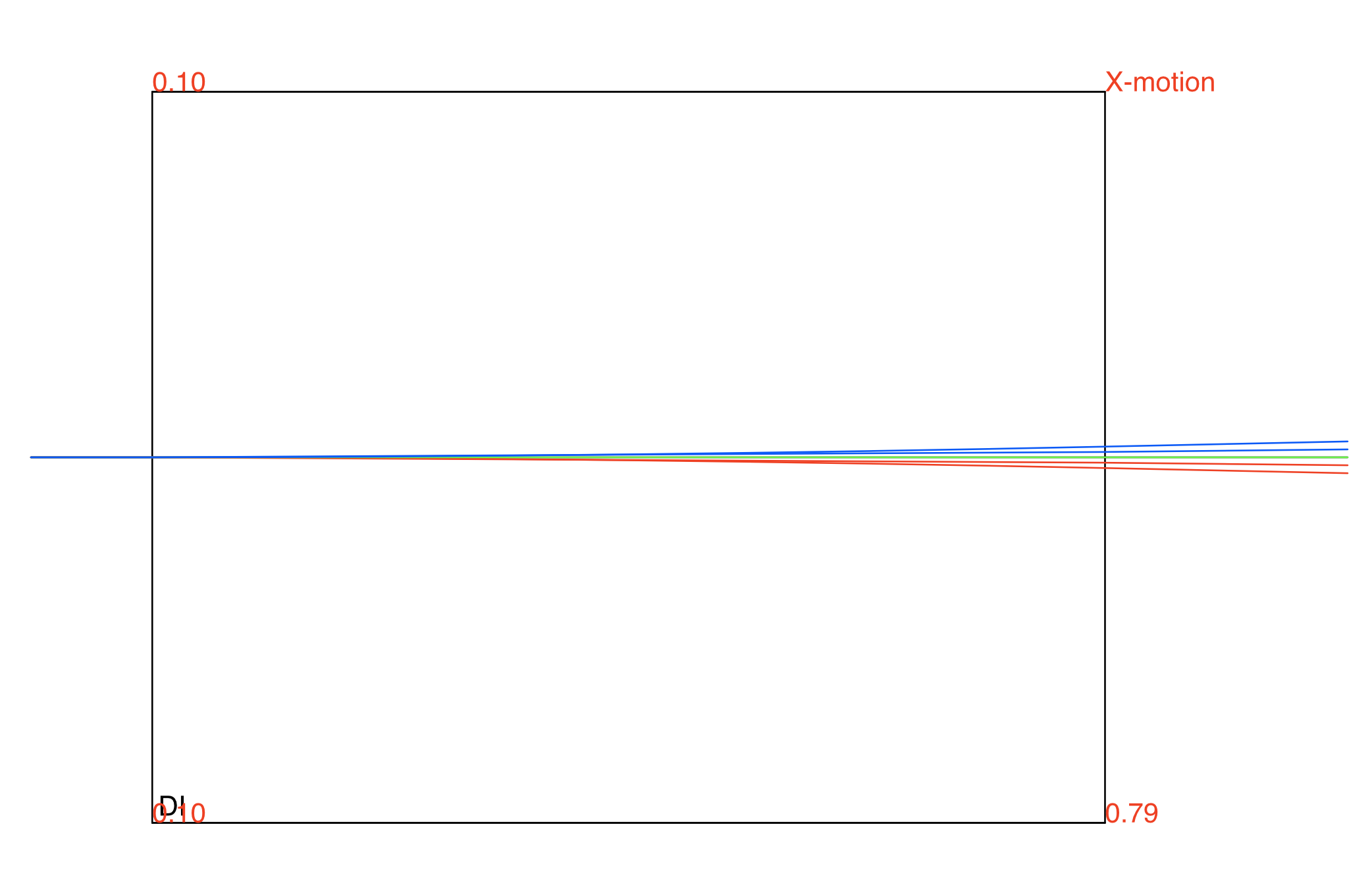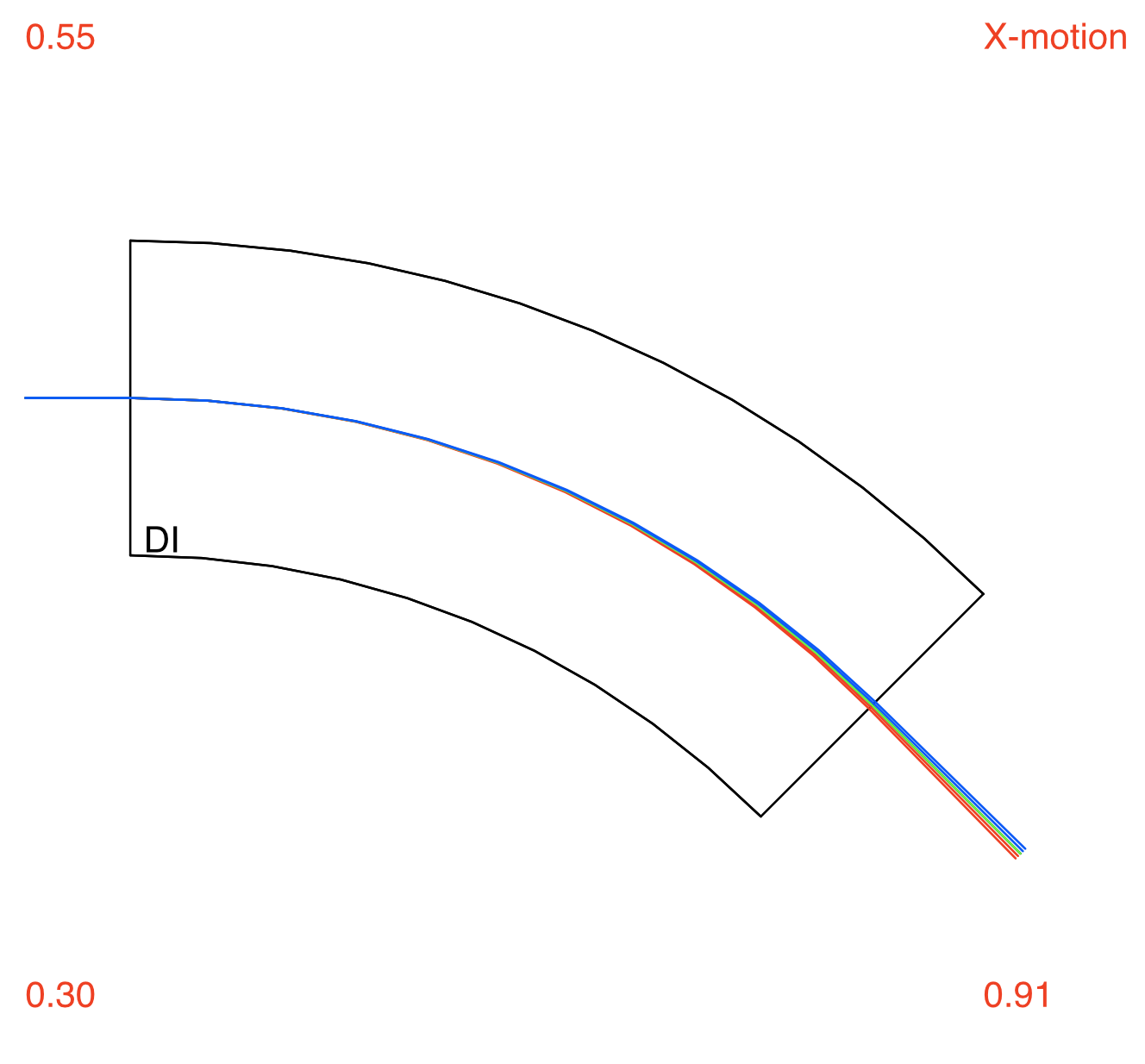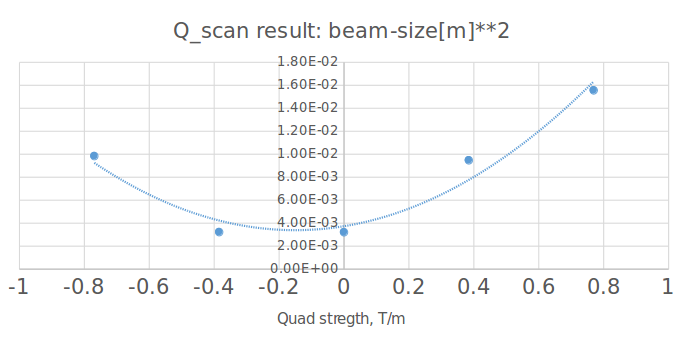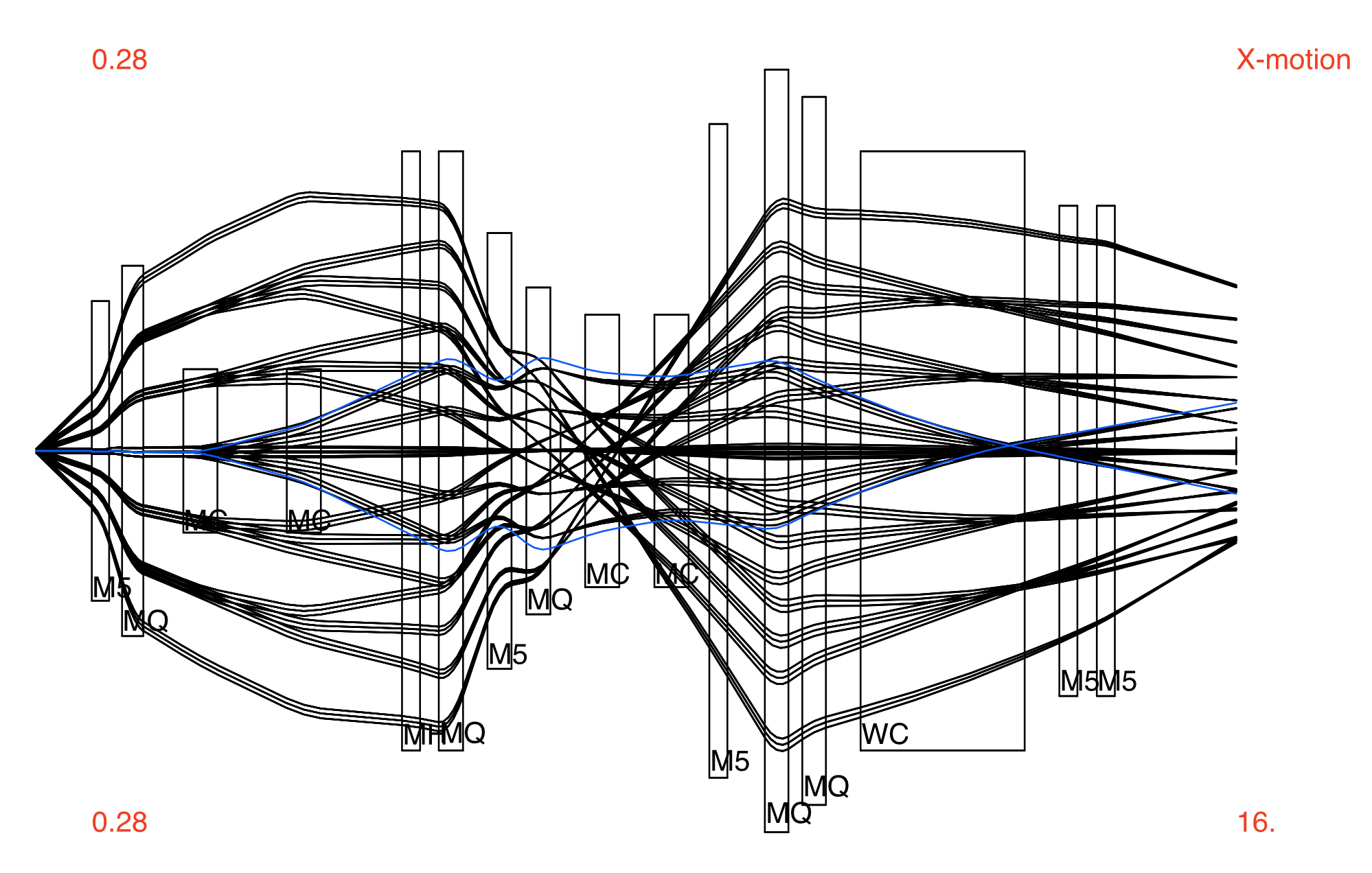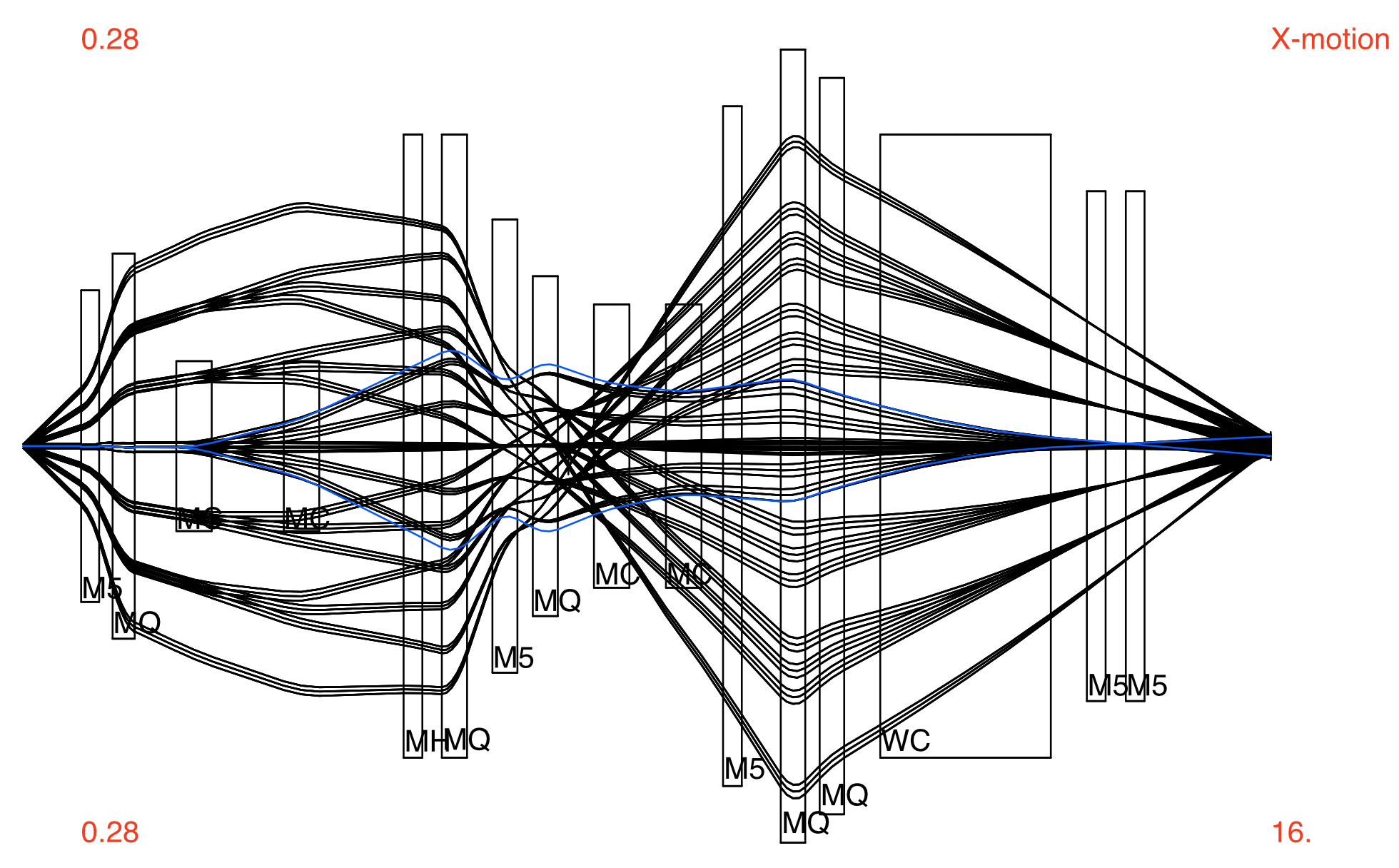User Tools
Sidebar
group_5
Monday 10th September
Question 3:
- Group chose a 15O + α reaction with SECAR.
- Example_1.fox was edited to include a dipole which bends the trajectory 45°.
- <PD> (corresponding to ΔE/E) in coordinate SB was changed to 0.01 to create a small momentum spread:
- PTY was changed to 3 to allow us to see the curvature:
Question 4:
- Used website to calculate θmax and ΔE/E
- * Opening angle = 0.59 deg = 10 mrad which is less than the θmax=25 mrad so we're good.
- * ΔE/E = (12.083-11.593)/(12.083+11.593) ~2% which is less than the 3.1% threshold so this also works.
Question 5:
- Proton capture on 15O one might expect from rp-process conditions is halted by the short half-life of 16F (40 keV) and its proton emission back to 15O. The two minute half-life of 15O further acts to limit transitions out of 15O, making 15O a waiting point in nucleosynthesis in this mass region.
- 15O + α reaction plays a role in bypassing this waiting point in the ignition of type I x-ray bursts on accreting neutron stars, but the cross-section at relevant temperatures/energies has been experimentally inaccessible to date. The next generation recoil separators, St. George at Notre Dame and SECAR at NSCL/FRIB may reach sensitivity to this important reaction.
Question 6:
- Using 'WRITE 6 VMAX(RAY(1))' xmax was calculated to be 0.2909704181068736E-002 m
- Plotting COSY beam size (x) and the quadrupole field strength(divided by aperture radius) and arrived at the graph below. Data doesn't appear to fit the quadratic form too closely.
- Calculated emittance is about 0.3 mm mrad, which is 50% larger than the 'real' emittance.
Question 7:
- Effective field length of Q2 was increased by 3% and the drift lengths either side were adjusted accordingly, so as not to change the the centre position of the quadrupole.
- The mass resolution was then optimised by minimising the function OBJ := 1/ABS(MRESOL_P1) by varying the strength of Q2, Q3 and Q4.
- This would increase the mass resolution to values of up to 85,000, however the emittance was very large.
- We realised that we should alter our objective function, in order to re focus our beam. This was achieved with the function OBJ := 1/ABS(MRESOL_P1) + ABS(ME(1,2)), where we added on the (a|x) matrix element to also minimise.
- This optimisation improved the mass resolution from 640.86349 to 724.66207, while still focusing.
Question 8:
- Tolerance for the beam size was found to be 0.00075 +/- 0.00004 m
- Tolerance for the beam position was found to be +/- 0.007 m
/srv/thewikis/JIOSS/data/pages/group_5.txt · Last modified: 2018/09/14 09:13 by surbrook
Except where otherwise noted, content on this wiki is licensed under the following license: CC Attribution-Share Alike 4.0 International

